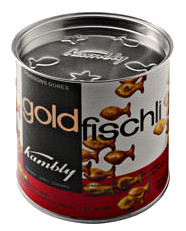I know, I should be excited about fuel cells. The Governor of California says it is important, but I honestly do not see them playing any significant role for many decades to come. The AP has posted a story that includes the bad news with the good:
The biggest obstacles standing in the way of wider adoption of fuel cell vehicles are cost and the dearth of hydrogen fuel stations. For the Clarity’s release in California, Honda said it received 50,000 applications through its website but could only consider those living near stations in Torrance, Santa Monica and Irvine.
Initially, however, the Clarity will go only to a chosen few starting July and then launch in Japan this fall.
California Gov. Arnold Schwarzenegger has called for a statewide network of hydrogen stations, but progress has been slow.
No kidding. He might as well have called for statewide adoption of unicorns. Where are these expensive hydrogen stations going to come from? Big oil? Energy companies? Ha.
The state has also recently relaxed a mandate for the number of zero-emission cars it aims to have on roads. By 2014, automakers must now sell 7,500 electric and hydrogen fuel cell vehicles, a reduction of 70 percent.
Talk is cheap, obviously. Why reduce the pressure for demand? Hydrogen is a pipe dream since it requires a massive investment in infrastructure technology that does not even exist yet. Diesel, on the other hand, could achieve similar results with technology that is present today and does not require a change of heart for the oligopoly of big energy companies. Perhaps I should say oil-gopoly?
The US energy department paints a pessimistic picture for hydrogen fueling stations:
If hydrogen were priced to provide cost parity with conventional vehicles, most hydrogen infrastructure stakeholders could turn a profit in the long run, but break-even would not be achieved for many years.
Unconventional approaches are needed to improve capacity factors and reduce the capital cost of the hydrogen infrastructure, especially in the early years of infrastructure development.
Here is a real shocker, for example:
Utilizing existing excess hydrogen capacity can result in significant capital investment reductions in the early years. These cost reductions need to be examined on a regional basis, for example, in the Midwest, 50 percent of the population is within 100 miles of an existing hydrogen plant.
If you want the fuel, you will have to live in low-value industrial regions like those favored by giant chemical plants (e.g. ammonia). Sound like a good trade-off to you? Do you want to live next to an oil refinery to get petroleum into your car? No, of course not. Again, diesel needs only natural sources of oil such as plants, animals and minerals nearby. Imagine living near a forest, or restaurants, or a coast-line with algae, or even a desert with algae for that matter. I see the hydrogen generation/transportation problems many decades away from being solved, or presenting a suitable model.
